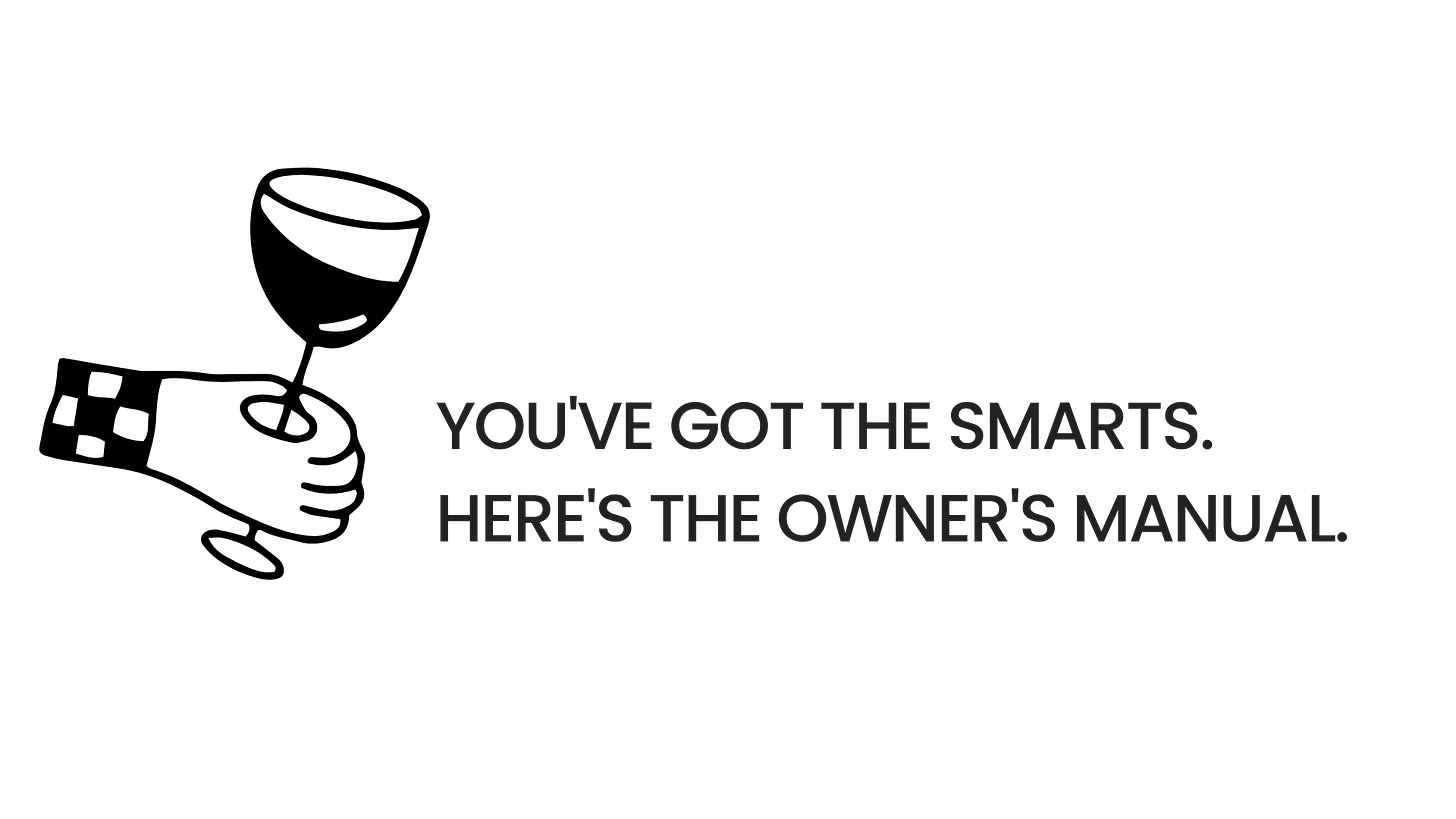Amateurs discuss strategy, professionals build engines.
An autopsy of dead plans, and the boring acronym that could have saved them.
This is part of The Unsexy. A series for capable people who are ready to trade the excitement of new ideas, for the power of unsexy, consistent output.
You’ve been in that room.
The annual strategy off-site. The air thick with ambition and fresh whiteboard markers. Flip charts cover the walls, plastered with SWOT analyses and brave five-year goals. After two days of passionate, intelligent debate, the team walks out with a masterpiece. A cathedral of a plan.
You feel brilliant.
Then, Monday morning hits. And the cathedral feels a million miles away.
The plan, once so clear and vibrant, is now just a PDF. An attachment in an email thread no one will ever open again. The energy bleeds out into the daily swamp of urgent-but-unimportant tasks.
Two months later, you realize with a sinking feeling that you’re not building a cathedral. You’re just “slipping on watermelon peels”, as we say in China. Sliding wherever inertia takes you.
It's one of the most soul-crushing feelings at work: holding a perfect map but walking in circles in the desert. It makes you question the strategy, the team, your own ability to lead.
After watching this same pattern kill dozens of companies, I've come to a simple truth.
The quality of your weekly check-in is a far better predictor of success than the quality of your five-year plan.
I’m not here to talk about more meetings or more hustle. But I want you to think about having an engine. A simple, relentless machine that predictably turns ambition into action.
And the best one I’ve ever seen is almost insultingly simple. You’ve probably seen it before, dismissed it as corporate jargon, and moved on.
It’s called PDCA. And while the name is boring, the confidence it creates is the closest thing to operational magic I've ever seen. In an age of AI-generated “blueprints” and complex SaaS tools, we think the answer is a more sophisticated plan.
It's not. The answer is a more reliable rhythm.
The 4-Stroke Execution Engine
Think of this as a simple, four-stroke engine.
When all strokes are firing in rhythm, week after week, you create unstoppable momentum.
I learned this the hard way. My first leadership role, my strategy for execution was 'work harder and hope for the best.' It led directly to burnout and a brilliant-on-paper project that failed spectacularly. The scar tissue from that failure forced me to get serious about finding a better way. This is it.
1, The Treaty (Plan)
A plan is useless until it becomes a treaty.
A treaty is a sacred pact, and it’s forged in two stages: fierce debate, followed by absolute commitment.
Inside the room, it's a "red zone" of intellectual combat. Every assumption is challenged, every timeline stress-tested. Polite silence is treason. But the moment you leave that room, the debate is over.
The decision is law. You execute it with profound respect, even if it wasn’t your first choice. Why? Because a unified team executing a "good enough" plan will always, always beat a divided team with a "perfect" one.
2, The March (Do)
This is where the engine usually seizes, it’s the gap between knowing and doing. You start the march, but without a scoreboard, you’re just wandering. You can’t call it “progress” if you can’t see the score. You're just burning energy.
The most crucial part of "Do" is to define what "done" looks like before you even start.
3, The Weekly Compass (Check)
Here lies the absolute heart of the engine.
To walk out the desert, you need a compass, and you need to look at it regularly. Your weekly check-in isn't another draining Zoom call; it’s a 15-minute compass calibration. It's fast, direct, and ruthless. It is not a story-telling session.
🔳 The Compass Questions:
Where did we agree we would be by this week?
Where are we, really?
What are we doing next week to close that gap or press our advantage?
That's it.
This weekly ritual is an operational superpower. It means you can never be truly lost, because you are never more than four business days off course. It replaces anxiety with tangible awareness.
4, Upgrading the Map (Act)
This is what separates the pros from the amateurs.
A competitor drops a new feature. A new TikTok trend is dominating your industry. The "Act" phase is your muscle for reacting in a week, not a quarter. You take what you learned from the "Check" and use it to make the entire system smarter.
A success? Don't just celebrate it. Codify it. Turn the winning tactic into a checklist, a template, or a new standard process.
A failure? Don't just accept it. Find the root cause and build a rule so that specific mistake can't happen again.
This is how an organization actually learns. It's how you build a machine that gets relentlessly better.
The Two Elegant Lies That Kill Execution
Even with a perfect engine, your own mind can cut the power. Be on guard for two seductive lies that sound like legit excuses but are actually kill switches for momentum.
🔳 The Mindset Shift:
"It's too difficult." This is someone who thinks their job is to identify problems, which is corporate-speak for 'I don't want to do the hard work of solving them.'
When you hear yourself say, "This is impossible," force yourself to rephrase the question: "What resources must I acquire to make this possible?"
"I'm too principled." The most elegant way to reframe failure as a moral victory. "We didn't hit our sales goal, but that's because we're not ruthless." Stop. Force yourself to ask the question again: "Principles are guardrails, not excuses. How do I drive as fast as possible within them?"
The Hum of the Machine
Think back to that ambitious plan you once had. The one that now feels like a ghost.
The anxiety you feel about your goals comes from treating them like lottery tickets, hoping for a lucky break. An engine changes that. It turns the grand, abstract strategy from that beautiful PowerPoint deck into a series of calm, concrete, weekly actions.
You stop hoping. You start executing.
This is what real control feels like. It’s the freedom that comes from knowing you are no longer the gambler.
You are the house. Find your first move. Turn the engine on. And listen for the hum.
A Quick-Start Guide
Theory is useless without action. Forget a company-wide rollout. Just prove this to yourself. Pick one project. For the next three weeks, follow this rhythm.
Week 1: The Setup & First Lap
(P) Monday Morning (15 Mins): Define one meaningful outcome for the week. Not five. One. Write down the 3-5 key actions to get there. This is your treaty.
(D) Tues-Thurs: Execute. Focus only on those actions.
(C) Friday Afternoon (15 Mins): Calibrate. Look at your plan. Answer the three Compass Questions. Write the answers down. No overthinking.
Week 2: Finding the Rhythm
(A) Monday Morning: Look at last Friday's answer. Make one smart adjustment to this week's plan.
(P, D, C): Repeat the cycle. Notice how the Friday check-in feels faster. The rhythm is building.
Week 3: Feeling the Hum
Repeat the cycle. By this Friday, you’ll feel it. The vague anxiety of "am I doing the right thing?" will be gone, replaced by the calm confidence of someone who trusts their system. You've built your first engine.
Hi!
I'm Yuehan. After a decade spent building businesses in both the West and China, I'm sharing my most valuable, road-tested lessons right here on Substack.
Since I'm starting from scratch on this side of the world, your support means a great deal. If this piece resonated, a restack or a simple ❤️ is massively appreciated.











